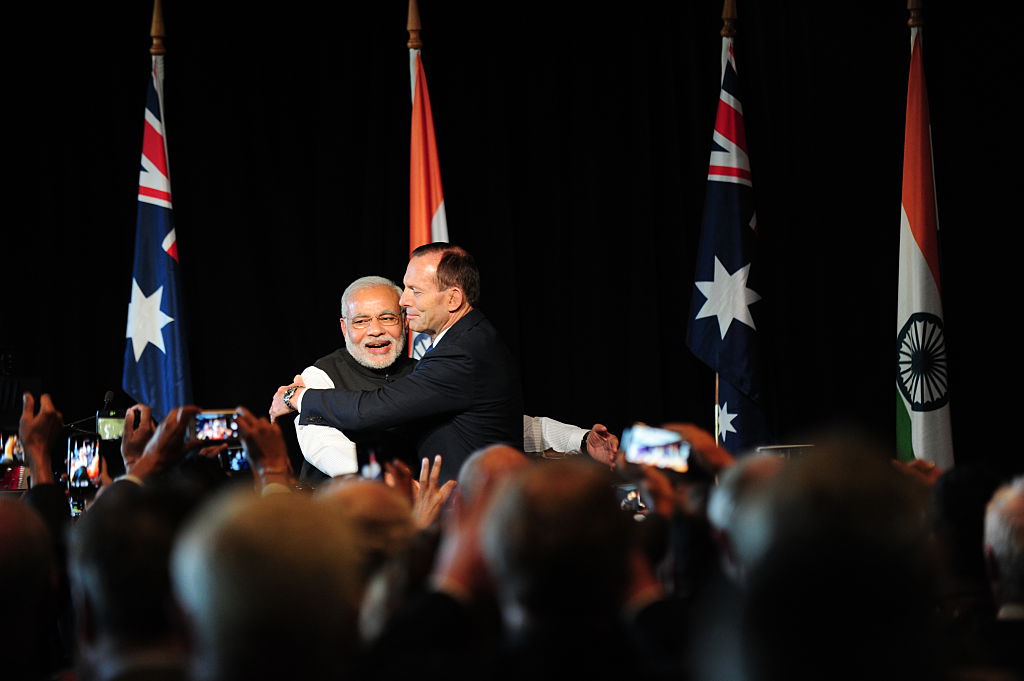 Print This Post
Print This Post- The Strategist - https://www.aspistrategist.org.au -
ASPI’s decades: Eyeing India
Posted By Graeme Dobell on May 17, 2021 @ 06:00

As a US ally, Australia’s priorities have tended to be Western in character. As one of the leaders of the Non-Aligned Movement in the Cold War, India’s priorities have traditionally been non-Western. But a new sense of dynamism in the Asian regional security order is drawing the two countries closer together.
To the mystification of Australians, this remains a fairly large bone of contention that is regularly picked over by Indians. Together with the still present perception that Australia is a ‘stalking horse’ for the United States, this means Australia often does not get the hearing it should in India. For some reason, it has proven difficult to put the past behind us.
There is a continent-wide security architecture that is finally arriving in the Asia–Pacific, perhaps for the first time, certainly for the first time since European colonialism. It’s a continent-wide security interdependence, and this security interdependence is linked clearly to the rise of China. In other words, China makes Asia a region.
The uranium deal is first and foremost a diplomatic gesture meant to jumpstart Australia’s broader engagement with India. Both countries share an interest in Indian Ocean maritime security and bilateral military relations can be built around that common interest. We should expect to see strengthened dialogue between India and Australia on security issues. And we can expect that more joint military exercises and military-to-military exchanges will also be announced.
India shares our democratic bias, but the political character of the Chinese state isn’t its primary strategic concern. For Australia, a democratic China becoming the predominant Indo-Pacific power is a very different proposition to an authoritarian China occupying that position. India’s concerns about a powerful China would exist irrespective of whether China were a democracy.
Article printed from The Strategist: https://www.aspistrategist.org.au
URL to article: https://www.aspistrategist.org.au/aspis-decades-eyeing-india/
[1] exponentially: https://aus.thechinastory.org/archive/economics-and-the-china-resources-boom/#:~:text=The%20Australia%E2%80%93China%20economic%20relationship,than%20Australia%20is%20to%20China.
[2] people-to-people: https://www.dfat.gov.au/geo/india/Pages/india-country-brief
[3] zero territory: https://s3-ap-southeast-2.amazonaws.com/ad-aspi/import/Improving-on-zero.pdf?DZV6Em9IBTXFJ5of3iOFW2lM3gs0b071
[4] blind spots: https://s3-ap-southeast-2.amazonaws.com/ad-aspi/import/widening_horizons.pdf?zjJdPqcwgzaWXGvPJ8GT5PZGCTzLeEAG
[5] considerable distance: https://s3-ap-southeast-2.amazonaws.com/ad-aspi/import/SI_India.pdf?Yf5ajnIHBNfXuWJP.jCAetcx_dZmS_QH
[6] not reflected: https://s3-ap-southeast-2.amazonaws.com/ad-aspi/import/ASPI_Shared_interest.pdf?xHDSCUkUYZAYxMaa_NdLLqE0p1ALLxce
[7] change the map: https://s3-ap-southeast-2.amazonaws.com/ad-aspi/import/ASPI2005Conf_Day1.pdf?fgCo5XT1lLjgfkIL45uaf0Y.F6Nj4W_r
[8] nuclear power’: https://www.aspistrategist.org.au/the-usindia-relationship-cold-war-politics-vs-globalisation/
[9] challenge: https://www.aspistrategist.org.au/indian-perceptions-of-the-indian-ocean/
[10] strategic partnership: https://india.embassy.gov.au/ndli/pa5009jsa.html
[11] security cooperation: https://india.embassy.gov.au/ndli/pa5009jsb.html
[12] question of: https://books.google.com.au/books/about/My_Story.html?id=AU6SAwAAQBAJ&redir_esc=y
[13] diplomatic tool: https://www.aspistrategist.org.au/australias-nuclear-safeguards-agreement-with-india/
[14] report: https://dfat.gov.au/geo/india/ies/index.html
[15] deep strategic competition: https://www.aspistrategist.org.au/the-geopolitics-of-australias-india-economic-strategy/